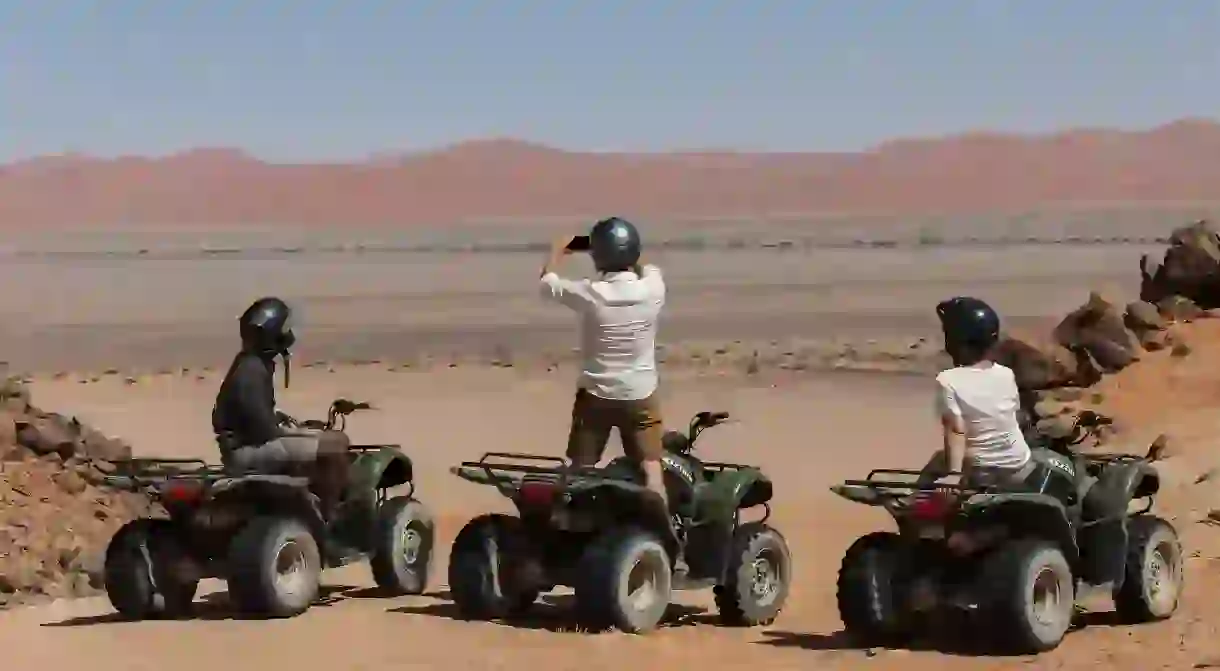Travel After Coronavirus: Unmissable Experiences in Namibia

Namibia is mostly covered by desert – and it’s the oldest in the world. The dramatic landscape along the coast sees red sands clash with clear blue oceans, and as Culture Trip is about to discover, this unique country is also a travel destination you should visit soon.
When Namibia was recently added to the list of countries that were deemed “safe” as part of the UK government’s travel corridors scheme, many people began to look for it on a map. Look north of South Africa, along the west coast, and you’ll find a large expanse of land that was once a German colony.
Welcome to Namibia, a stunning destination that is beginning to carve out a niche as a trendy travel spot for those in the know. Here are a few reasons why everyone should consider a trip to this magnificent part of Africa in the near future.
Why visit Namibia?
The Namib Desert covers most of the country, and is a crucial part of pretty much everything that Namibia has to offer. The word namib is Khoekhoegowab in origin and translates as “vast place”. This is a perfect description for the country, where you can easily get swept away by the scale of the empty spaces that unfurl in front of you.
This remoteness is part of what makes Namibia such a desirable place to explore. The northwest of the country ranks as some of the least-populated land in the world, and the deserts are the driest in sub-Saharan Africa. Making the most of this remarkable natural landscape, travel operators have begun to carefully harness the raw majesty of the country to create experiences away from the tourist trail that focus on escapism.

Distances between the best travel spots are long, so your best bet is to rent a vehicle if you want to explore on your own. The roads and driving conditions on the main routes are safe, and you’re likely to see other tourists making the most of the open desert roads. You can also fly between the major points of interest, such as the capital Windhoek, the coastal regions to the west and the more remote northern territories, but this is only recommended if you are unsure about getting behind the wheel or on a tight schedule.
More than 40% of Namibia is designated conservation land, with a large number of national parks offering individual self-drive experiences. With all that in mind, let’s take a closer look at some of the best offerings available to visitors across the country.
Culture Trip’s guide to the places to visit in Namibia
Etosha National Park
This salt pan at the heart of the 20,000sqkm (7,722sqmi) Etosha National Park makes for a wonderful driving experience if you want to veer off the main roads, yet stay on a well-maintained route. In the dry season, you can expect to see elephants, black rhinos and lions in the wild, whereas the wet season brings colourful bird species including pelicans and flamingos. The remote park also has excellent camping facilities – the ideal spot to spend the night in comfort.

The Skeleton Coast
Away from the deserts, the other remarkable side of Namibia can be found on the coast. The Skeleton Coast sees towering sand dunes come to a dramatic pause as the Atlantic Ocean crashes into the land. The 500km (311mi) stretch of dramatic beaches is peppered with shipwrecks, whale skeletons and an array of marine wildlife. There are even a few places to stay here including Shipwreck Lodge, although the real experience is outside.

Sossusvlei
The undulating sand dunes of Sossusvlei are some of the best-known landmarks in Africa. Photographers are attracted to the reds and pinks of these natural features, which can reach up to 400m (1,312ft) in height. Sossusvlei literally translates as “dead-end marsh”;however the harsh conditions haven’t stopped wildlife from thriving in the region. Situated in the Namib-Nakluft National Park, Sossusvlei has a number of attractions of its own, so you can spend time camping here or sleeping under the stars in one of the luxury lodges.

Kulala Wilderness Reserve
One of the spectacular retreats available in Sossusvlei is Little Kulala, in the Kulala Wilderness Reserve. The lodge has private access to the incredible red dunes and salt plains of the national park, while giving guests a luxury experience, too. The 27,000ha (66,718-acre) Kulala Wilderness Reserve is a secluded destination and is one of the more casual ways to explore Namibia, if you have the budget. There are wellness treatments available if you want to stay within the confines of Little Kulala, although most visitors will want to take up the option of tackling a desert adventure experience instead.

Windhoek
Most visitors to Namibia arrive by plane at the international airport in the capital city, Windhoek. Before you head off into the desert, though, take time to explore the bustling city, a lush oasis of modernity surrounded by nature. Namibia is one of the safest destinations for tourists in Africa, so you can stroll around and enjoy the relaxed ambience the country is famous for. You’ll also see some great architecture in Windhoek, which depicts a more turbulent past.














